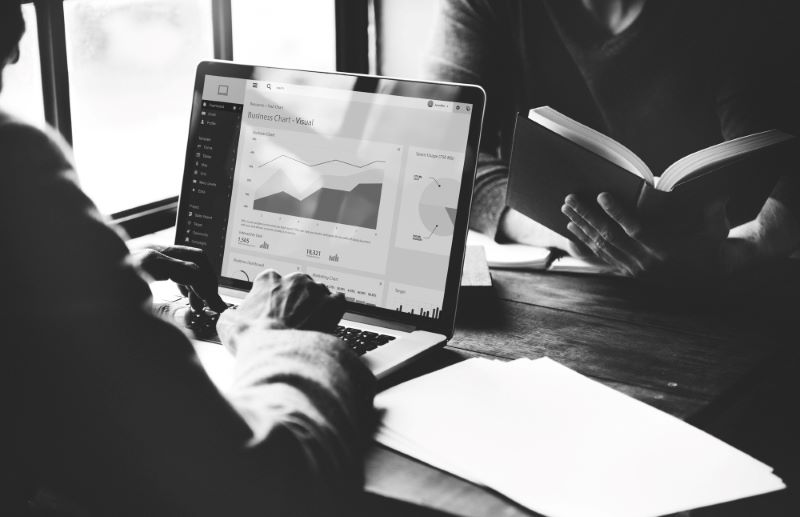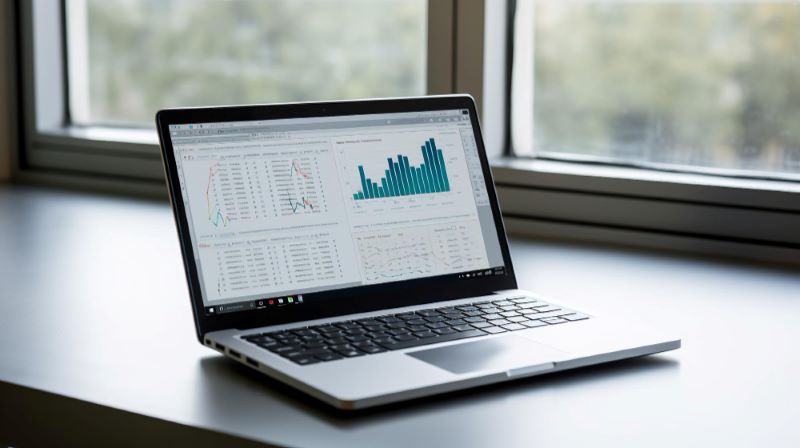Making Decisions Based on Data: Everything You Need To Know
As humans generate more than 2.5 quintillion bytes of data every day, it’s not too late for businesses to include data into their decision-making processes.
Many big companies, like McDonald’s, Netflix, and Amazon, have already started using big data to make decisions.
The phenomenon “data-driven decision-making (DDDM)” refers to using facts, data, and metrics to align business decisions with company goals. According to a PwC survey, highly data-driven companies experience 3 times more improvements in decision-making.
To make the best decisions based on data, organizations need to think beyond just choosing the right analytics technology. Instead, they need to build a model or a culture that allows analysts, managers, and human resource specialists to access the data they need.
Let’s have a look at how businesses can encourage data-driven decision-making across all levels to uncover powerful insights that drive action.
The Importance of a Data-driven Culture

Data-driven decision-making helps businesses make informed decisions by using and analyzing data. This way, the data analysts validate and authenticate the actions before actually recommending them.
Businesses scrape and use data for various functions, such as:
- Collecting survey responses or feedback from customers about their products, services, and features to identify any flaws
- Utilizing user testing to evaluate customers’ needs and wants regarding a product or service to see how they react to it before a full release
- Testing a new product or service to predict its performance in the market
- Analyzing shifts in the data to identify market trends and changes in customer interests to create more opportunities and prevent threats
To incorporate data into a decision-making process, businesses have to look out for several factors. These include their business goals, types of data collected, and the quality of data.
However, collecting, analyzing, and interpreting data into valuable, actionable insights has always been a real headache for most businesses.
Although many of them are already operating on this phenomenon, the dynamics have changed a lot over the past few years. This has complicated making decisions based on data for the businesses.
According to New Vantage Partners, around 97% of organizations reported that they are investing in data initiatives. Similarly, another IDC study found that companies have made heavy investments in technological advancement.
But unfortunately, 70% of these steps failed as the companies focused more on the investments without developing a data-driven culture beforehand. So, to execute the best strategy, businesses need to develop a data-driven culture before investing in data collection.
Examples of Using Data to Make Decisions

Over the years, many renowned companies have become data-driven. This means they have established a data-driven culture where data is valued and easily accessible across the entire organization.
Let’s go through some big names of the industry and see how they are utilizing data.
McDonald’s
With the popularity of the various healthy eating trends, McDonald’s experienced many of its customers diverting from them.
As a result, in 2019, the food chain invested a hefty amount in big data to understand its customers better and get ahead of the competitors. The Harvard Business School called this step ” a shift from big Mac to big data.”
The brand acquired Dynamic Yield, a big data firm that provides companies data via decision logic technology based on machine learning — and that was for $300 million. With its acquisition, McDonald’s now uses their insights to customize their menus according to their customers’ past purchases and even the current weather, local news, and the time of the day.
By making data-driven decisions, McDonald’s is managing its high-volume orders more efficiently.
Netflix
When making important business decisions or predicting the future, depending on your gut can be pretty risky. Of course, no company wants to bear additional losses just for not using data.
This is why one of the biggest streaming sites, Netflix, uses big data to predict what its users actually want to watch. The data analysis helps Netflix conduct a “predictive analysis” that evaluates users’ tastes and interests and suggests them accordingly.
Moreover, the company analyzed over 300 million plays daily to choose the best ones for the development based on 4 million ratings from subscribers and 3 million searches.
These plays then became a hit, and you probably already know them by the name “House of Cards” and “Arrested Development.”
Coca Cola
With the rise in technology, marketing teams are now more focused on using data and analytics to serve the right ads to the right target audience.
That’s what Coca-Cola has been doing for years. With more than 105 million followers on one social platform alone and another platform of more than 2.7 million, the beverage giant has got an ocean of data to analyze for decision-making.
According to a Forbes article, Coca-cola utilizes image recognition technology and data analytics to extract information about their users.
Based on the posts and photos they share on social media, Coca-cola uses the drinking habits, location, and many other insights of their consumers to develop personalized ads. These ads gathered four times higher click-through rate than other advertising methods.
Benefits of Making Decisions Based on Data

So what else can companies achieve from making decisions based on data? Here’s what you could expect to draw out of your own information.
Making more confident decisions
Decision-makers are always on their toes. They are responsible for giving suggestions about various crucial business operations, and they can’t afford to fail at any point. That’s why most data analysts tend to confirm their findings before passing them to upper management.
Data analysis gives decision-makers just the right dash of confidence they need to reach a conclusion. For instance, it gives businesses a clear view of their current position, which helps them understand the impact of a decision on their organization.
Moreover, data analysis kicks all the doubts, opinions, and gut feelings out of the room and welcomes things based on reality. This gives your team a sense of confidence that helps the entire organization focus more on their vision and goals than worrying about making the wrong decision.
However, know that a data-driven decision doesn’t always end up correct if there are problems with the data itself. Usually, any error in data collection or interpretation will alter the overall impact or nature of a decision. To overcome this, you should monitor your decision’s impact regularly.
Beating the competition
With an increased flux in small businesses since the pandemic, the market competition has become tougher. In such a situation, you can neither miss a single opportunity nor ignore any threat.
When you reach a decision based on the analysis of data, you need to be reactive to it. Since data demands you to take action, your organization has to make decisions accordingly.
Moreover, businesses can also leverage data analysis to be more proactive in different business functions. This helps them think and move ahead of their competitors. For example, this can include identifying and grabbing opportunities before their competitors and detecting threats before they show their impacts.
Saving costs
Out of many reasons businesses choose to invest in data analysis is to reduce their expenses. A survey on Fortune 1000 companies also supported this statement by reporting that many executives use data to decrease expenses. According to the survey’s findings, 49% of the organizations adopting expense-reduction initiatives found positive results from their projects.
Data analytics do so by helping businesses analyze their customer data. Once organizations start analyzing data, they identify areas that are costing them significantly. So, instead of reducing costs randomly, they can use data analytics to have a deeper insight into making strategic adjustments.
As a result, big data also helps them improve their operational efficiencies.
How to Use Data to Make Decisions

The data analysis cycle doesn’t consist of specific steps. One interpretation can lead analysts to the next step, a step back, or jump directly onto the third one from the first.
Generally, you can perform data analysis in the following steps.
Step 1: Identify objectives
First things first, you need to list out all the business objectives you desire to achieve by analyzing data. These objectives can be increasing sales, generating more leads, or accelerating website traffic.
Once you identify your objectives, you can choose key performance indicators (KPIs) to determine which data you should analyze to find the answers.
For instance, to generate more sales, you need to analyze consumers’ interests, their activity on your page, web traffic, bounce rate, and more.
Step 2: Find key data sources
To establish a successful data-driven culture, businesses should take inputs from different departments to determine their objectives. This helps you find a broader insight into what people ask for and how you can prioritize reliable data sources.
Besides, constructive input also helps businesses guide their analytics culture and determine its nature.
Step 3: Collect data
Once you gather valuable inputs from your team, you can then start collecting and preparing data accordingly. First, search for high-impact and simple data sources that expose you to larger audiences. Then, create a dashboard.
Tinuiti reported that it centralized more than 100 data sources via an analytics platform that enables the agency to prepare and collect data faster.
Step 4: Visualize data and develop insights
Visual representations of data helps analysts convince their seniors more effectively. In addition, the visual elements, such as charts, maps, and graphs, help businesses understand trends, patterns, and changes in data.
Moreover, you can also choose an element according to your data’s nature. For instance, a bar chart for highlighting differences, a line chart for temporal data, and a scatter diagram to compare two measures.
After that, you need to find valuable insights from the data and communicate them in an exciting way to others. While doing so, you can also find answers to important questions and discover opportunities and risks that may impact your business’s success.
Step 5: Take actions
Once you develop insights, the next and final step is to take action accordingly. You also need to share these insights across all departments of your company to help them collaborate.
For instance, your marketing team can utilize insights to improve the website’s design and ad campaigns and collaborate with the supply chain department to improve distribution channels.
To make this possible, you can share dashboards with other teams, highlighting crucial points with interactive visualizations. This helps you make more informed actions and improve your business operations.
Using Proxies to Mask Your Identity

While you opt for scraping data from your competitors’ websites, keep in mind to use a reliable proxy from trustable providers like Rayobyte. It offers three types of proxies for businesses to hide their identity from their competitors, including:
Residential proxies
These proxies provide IP addresses of residential addresses. Because of that, they minimize your risks of getting banned or blocked. Moreover, these proxies are relatively faster than public proxies.
Rayobyte’s residential proxies lets you scrape data from your competitors’ websites in peace. The best part about this proxy is that this proxy provider believes in ethical web scraping. Due to this, it acquires residential IPs from its partners that can control how their connections are used. Rayobyte also has high sourcing standards to ensure that you’re getting quality residential proxies.
Data center proxies
These proxies have untraceable IP addresses and are hosted on data centers. Rayobyte’s data center proxies cover more geographical areas, including 26 countries from different continents. This means businesses can easily access these proxies from wherever they want.
Since these proxies are near the target website, they perform better and faster.
ISP proxies
Rayobyte’s ISP proxies have fewer chances of bans than data center proxies. Plus, they are easier to manage than their counterparts. Furthermore, these proxies are based in a data center, so you can benefit from both types of proxies. Like other proxies, these are also faster and ethically sourced. They also have longer IP address health.
Conclusion

For eCommerce companies or retail stores alike, data is crucial for many industries. Your business can use web scraping to extract data from your competitors’ websites and examine consumer behavior.
Making decisions based on data is crucial for the health of your company. You can use this data to improve your operations, develop better strategies, and grab opportunities before your competitors.
However, while doing so, you’ll need to hide your identity and IP addresses through a reliable proxy provider like Rayobyte.
The information contained within this article, including information posted by official staff, guest-submitted material, message board postings, or other third-party material is presented solely for the purposes of education and furtherance of the knowledge of the reader. All trademarks used in this publication are hereby acknowledged as the property of their respective owners.




